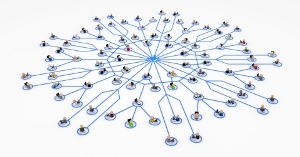
So how come most organizations shy away from incorporating UGC on their sites?
I think it’s because most organizations are not equipped to deal with UGC, good, bad or indifferent. And they are deathly afraid of negative comments. Here’s my take on UGC, why it’s here to stay and why most organizations need a UGC strategy:
- UGC can take many forms. A magazine site that allows visitors to rate articles support UGC. A store that allows ratings supports UGC. A blog that welcomes comments invites UGC.
- Sites that welcome UGC invite participation. And participation by the right people encourages more participation and more followers.
- UGC lets you tap into the expertise and experiences of your members, customers, and partners, which will enrich the content you provide.
- Supporting UGC on your site or application does not mean that you lose control. You can set up guidelines and moderate comments. On this blog, for example, all comments are immediately posted but I get notifications and I spam (delete) all comments that look spammy. Yes, I get the occasional snarky or negative comment, but unless the post contains profanity, I leave it on the site. The New York Times recently announced that Wikipedia, the site built on UGC, will soon impose a layer of editorial review on articles about living people.
- Celebrating UGC lets you tap into most visitors’ need for true interaction with you and your organization. I read every comment on this blog and respond personally when I get a request for information or assistance. I believe these interactions have helped Matrix Group make followers out of readers.
- If your organization is suffering from criticism re: transparency and responsiveness, UGC can help you face your critics directly. The Direct Selling Association launched a blog 18 months ago to counter false perceptions about direct selling. Although apprehensive about allowing comments in real-time, the organization decided it needed to make a strong statement about integrity and transparency. The results have been great. Negative comments are opportunities to address criticisms and myths. More importantly, the negative comments have been few and far between.
- Supporting UGC is also a wonderful way to let your staff, clients, partners and friends network and share their experiences. I was moved by the dozens of memories that members of the Matrix family posted to our 10th anniversary microsite. I didn’t know about some of the antics and every single post was a treat!
How about you? What’s your take on user-generated content? What are your favorite UGC sites? Has your organization taken the UGC plunge?


5 replies on “Who’s Afraid of User-Generated Content?”
I agree that many organizations are afraid of user-generated content. I think they fear a lack of control over what is said about them, and they don’t really understand the benefits of UGC. That’s sad because it can be such a powerful tool. I’ve tweeted about customer service problems I have had with retail stores, utility companies and the like, and some of the companies have Twitter streams to contact unhappy customers like me. That’s a powerful tool and makes a huge impact on me as a customer.
If you believe that your organization offers an excellent product or service, then there’s little to fear from public user comments. (And if you don’t, for goodness sake find something else to do!) For the past 10 years our inhouse design team has sent an annual electronic survey to everyone in our firm soliciting candid feedback. In addition to comments, we ask our internal clients to rate our group overall and every team member individually on a number of things, using a five-point scale: 1-Awful! 2-Needs Work 3-Satisfactory 4-Very Good 5-Awesome! (Respondents can remain anonymous). Ironically, of the thousands of responses we’ve received over the years, I don’t recall getting a single “Awful!” I think there’s something about making yourself vulnerable and wide open to criticism that folks translate as a willingness to listen and improve–and they’ll usually react positively to that!
I agree that many organizations are afraid of user-generated content. I think they fear a lack of control over what is said about them, and they don’t really understand the benefits of UGC. That’s sad because it can be such a powerful tool. I’ve tweeted about customer service problems I have had with retail stores, utility companies and the like, and some of the companies have Twitter streams to contact unhappy customers like me. That’s a powerful tool and makes a huge impact on me as a customer.
If you believe that your organization offers an excellent product or service, then there’s little to fear from public user comments. (And if you don’t, for goodness sake find something else to do!) For the past 10 years our inhouse design team has sent an annual electronic survey to everyone in our firm soliciting candid feedback. In addition to comments, we ask our internal clients to rate our group overall and every team member
I agree that many organizations are afraid of user-generated content. I think they fear a lack of control over what is said about them, and they don’t really understand the benefits of UGC. That’s sad because it can be such a powerful tool.